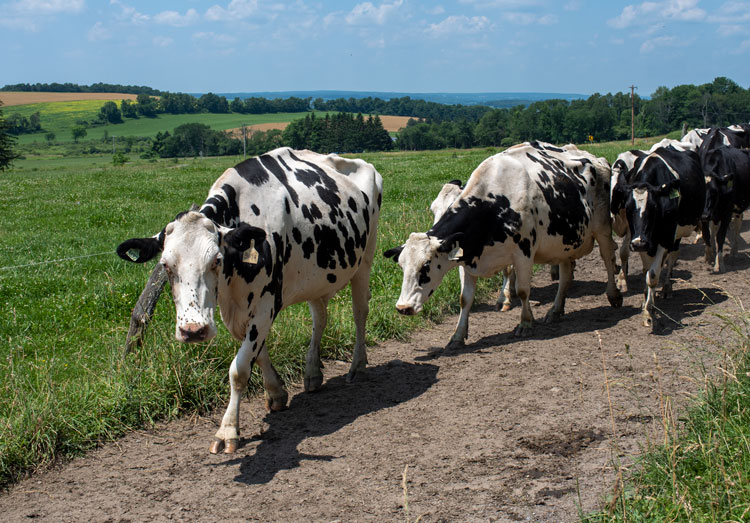
When lameness cases develop in a dairy herd, it can be difficult to get to the root of the problem. While some herd health issues can be reversed with one or two minor adjustments, the ability to cure lameness is rarely that simple.
“Seldom can I go into a herd and find it’s just nutrition or just an infectious disease that is creating a lameness problem,” said Ernest Hovingh, D.V.M., an extension veterinarian for Penn State. “Usually, it is some combination of a number of factors that are going to determine how healthy hooves are in a herd. That’s an interesting puzzle to try to solve. Very seldom can you just fix one single thing.”
During Penn State’s 2020 Dairy Cattle Nutrition Workshop, Hovingh explained that lameness is an intersection of internal (physiological) and external (mechanical) influences. He touched briefly on three main factors: the cow, the environment and facilities, and people and protocols.
Cow factors that can raise the risk of lameness include size and weight, body condition, hoof shape and confirmation, nutrition, other diseases, and genetics.
Environmental factors that might lead to lameness include stall use, stocking density, floor design and condition, footbaths, ventilation and cooling, hygiene, and bedding.
Beyond the barn
And then, there are the people factors. “This ties in with housing and cow factors, but people play a very important role as well in hoof health,” Hovingh said. This includes animal handling, identification and management of lame cows, feed mixing and delivery, and footbath and bedding management.
He highlighted the impact humans can have on a herd’s overall foot health. “Looking at a comprehensive hoof health program, look first at preventing lameness. The best way to deal with lameness is to prevent it in the first place. If we can’t prevent it, and we can’t prevent every incident, we have to have a good way to identify cows that are lame,” he said.
“Once we identify cows that are lame, we need a good way to manage those cows. If we don’t manage them properly, things are going to get worse. Properly managing a lame cow before it gets a more serious condition is beneficial,” he emphasized.








